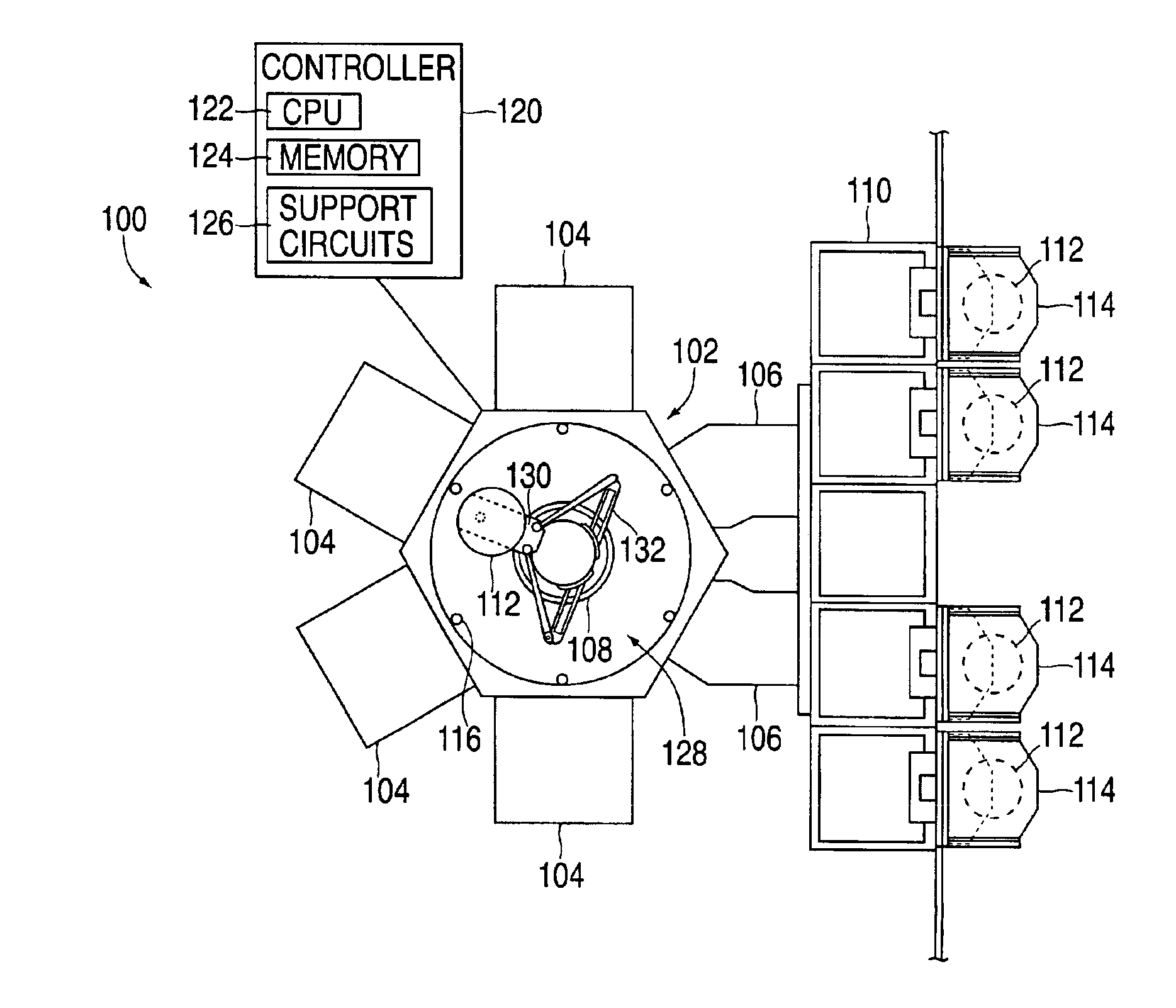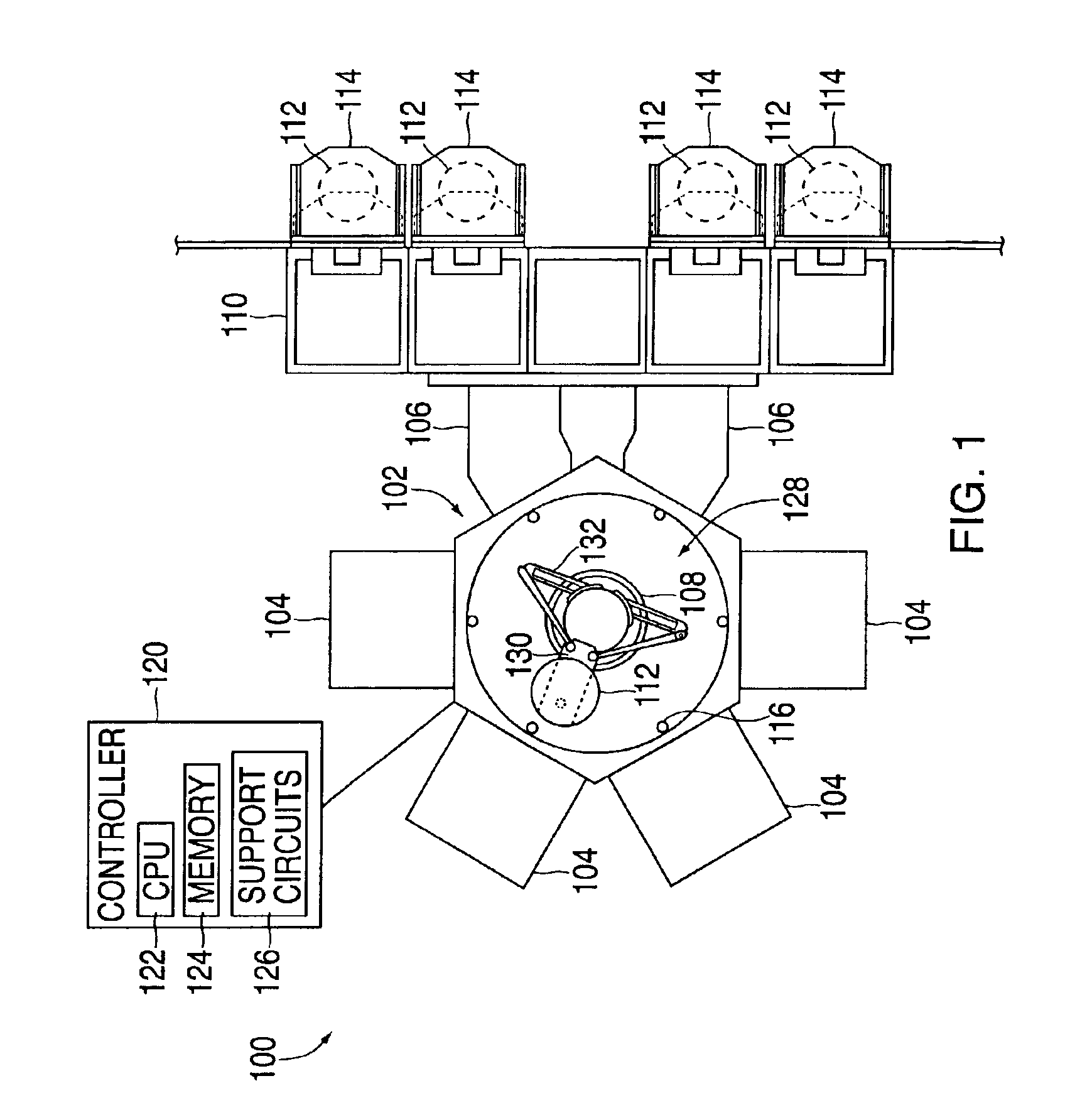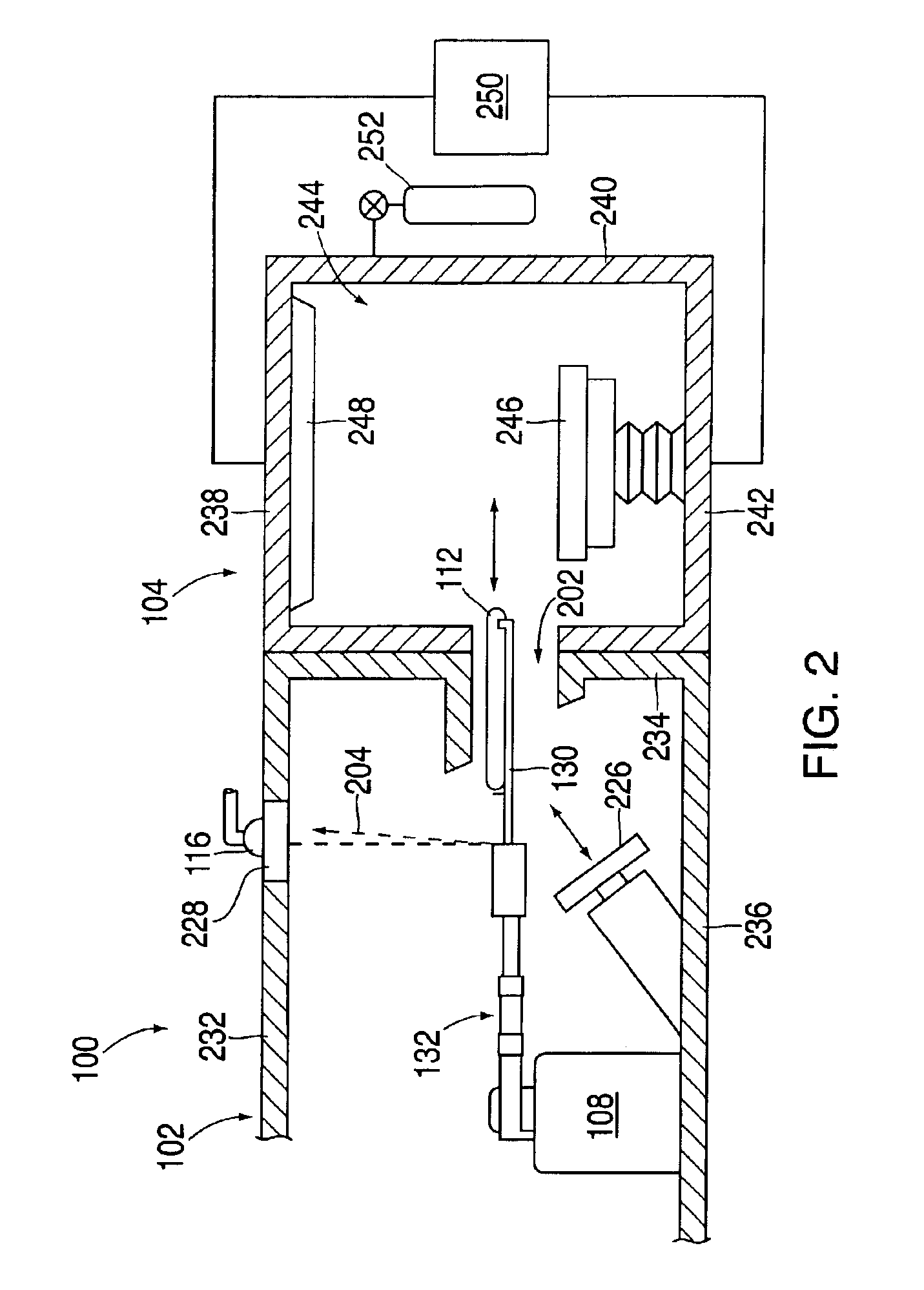Method for determining a position of a robot
a robot and position technology, applied in the field of robot position determination, can solve the problems of non-conformity, damage to the substrate or yield loss due to non-conformity, and the methodology of increasing the accuracy of the robot generally does not compensate for thermal expansion and contraction experienced
- Summary
- Abstract
- Description
- Claims
- Application Information
AI Technical Summary
Problems solved by technology
Method used
Image
Examples
Embodiment Construction
[0024]FIG. 1 depicts one embodiment of a semiconductor processing system 100 wherein a method for determining a position of a robot 108 may be practiced. The exemplary processing system 100 generally includes a transfer chamber 102 circumscribed by one or more process chambers 104, a factory interface 110 and one or more load lock chambers 106. The load lock chambers 106 are generally disposed between the transfer chamber 102 and the factory interface 110 to facilitate substrate transfer between a vacuum environment maintained in the transfer chamber 102 and a substantially ambient environment maintained in the factory interface 110. One example of a processing system which may be adapted to benefit from the invention is a CENTURA® processing platform available from Applied Materials, Inc., of Santa Clara, Calif. Although the method for determining the position of a robot is described with reference to the exemplary processing system 100, the description is one of illustration and a...
PUM
| Property | Measurement | Unit |
|---|---|---|
| Length | aaaaa | aaaaa |
| Velocity | aaaaa | aaaaa |
| Thermal expansion coefficient | aaaaa | aaaaa |
Abstract
Description
Claims
Application Information
 Login to View More
Login to View More - R&D
- Intellectual Property
- Life Sciences
- Materials
- Tech Scout
- Unparalleled Data Quality
- Higher Quality Content
- 60% Fewer Hallucinations
Browse by: Latest US Patents, China's latest patents, Technical Efficacy Thesaurus, Application Domain, Technology Topic, Popular Technical Reports.
© 2025 PatSnap. All rights reserved.Legal|Privacy policy|Modern Slavery Act Transparency Statement|Sitemap|About US| Contact US: help@patsnap.com



